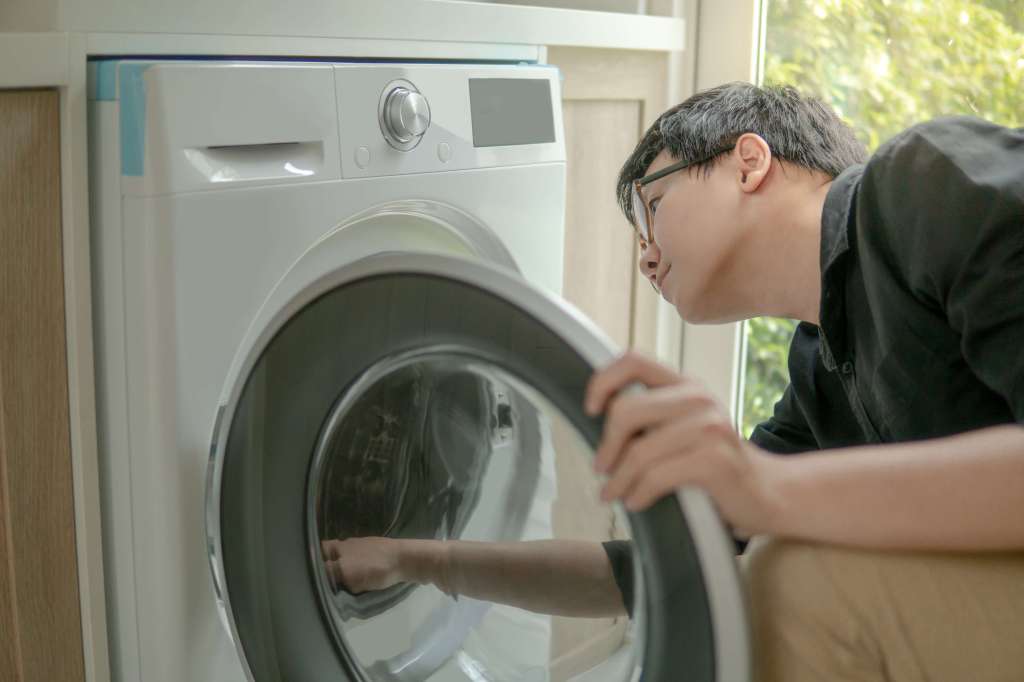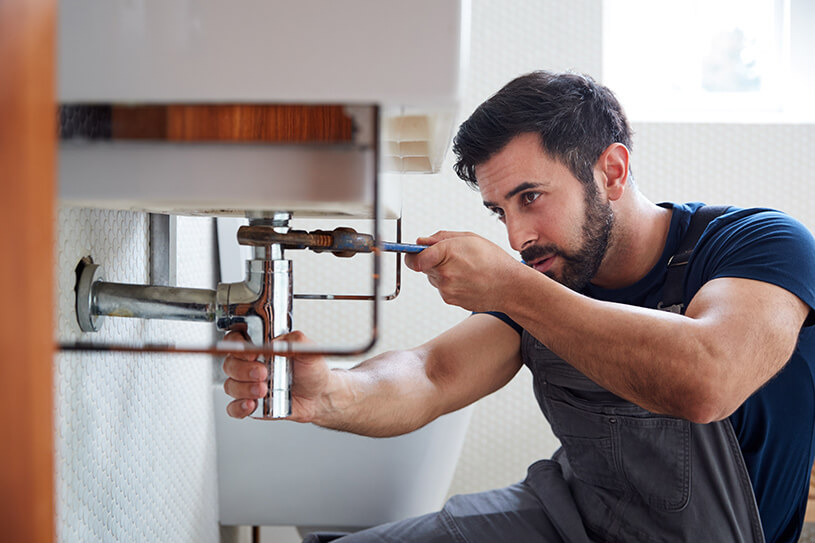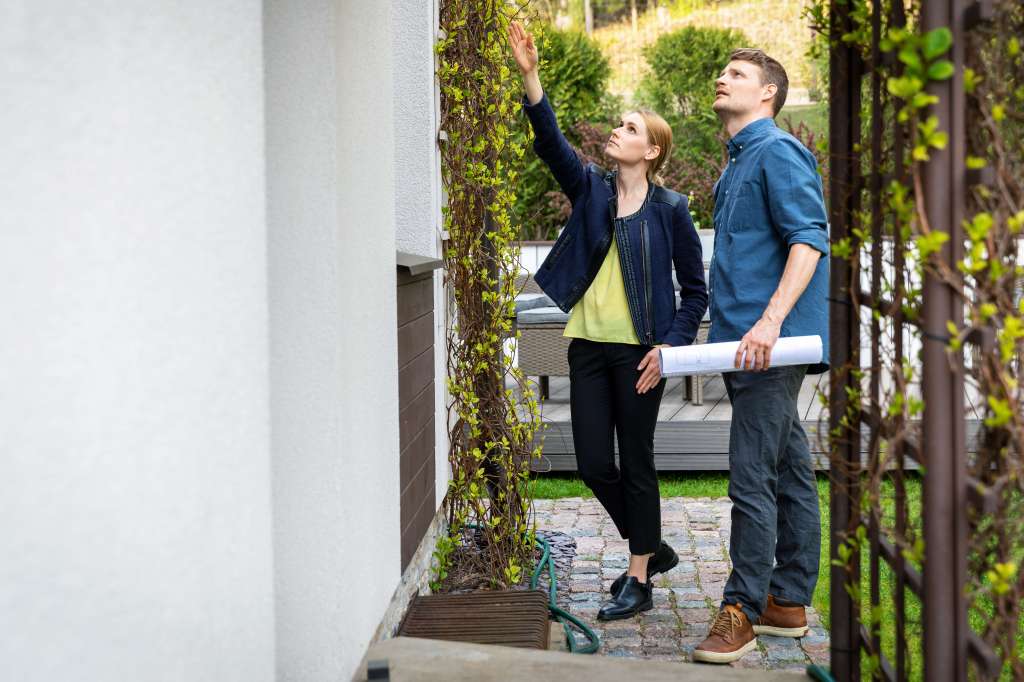During a tenancy, regular inspections help landlords to make sure tenants are looking after their property and catch any maintenance issues before they escalate.
Read our landlord inspection checklist to find out how often you need to visit the property, what you need to look out for, and how to make sure your property is safe for tenants.
Rental property inspection checklist template UK
Download your free template – it’s editable, so you can fill it in on your computer, or you can print a copy for property visits.
Property inspection checklist – what do you need to do?
We’ve split our property inspection checklist for landlords into three parts:
It’s likely you’ll need to inspect your property at least once a year, although many landlords like to visit once every six months. Other landlords may want to visit the property even more frequently, although it’s important to consider your tenants if this is the case.
When planning a mid-term inspection, you’ll need to give tenants at least 24 hours’ written notice, such as a text message, email, or letter.
However, it’s good practice to give them a week’s notice so they can make sure they’re around to let you in and clean the property beforehand.
Not only do inspections allow you to check on your property, but they give you the opportunity to build a positive relationship with tenants. For example, they may have some burning questions to ask you, or you could remind them about their responsibilities.
The better the relationship with your tenants, the more likely it is they’ll look after the property as their own, and let you know as soon as anything needs fixing.
Compliance and safety
Alongside the health and safety checks you need to make before the start of each new tenancy, it’s important that you make extra checks during a mid-term inspection.
Here’s an overview of what you need to look out for:
Electrical checks
During the house inspection, you’ll need to do basic checks of the electrics to see if there’s any obvious damage or hazards.
It’s a legal requirement to have electrical safety checks at least once every five years for new and existing tenancies.
This means you’ll need to get an Electrical Installation Condition Report (EICR) from a registered professional and give it to your tenants within 28 days of the inspection.
Read our comprehensive guide to electrical safety checks to find out more.
Smoke alarms and carbon monoxide detectors
Although your tenants should test smoke alarms and carbon monoxide detectors themselves, you should also check them during an inspection.
You’ll need to check they’re working properly and replace any worn out batteries. It’s also a good time to remind tenants to check them regularly too.
Our overview of carbon monoxide and smoke alarm regulations explains everything you need to know.
Heating and hot water
First off, it’s good to ask your tenants if they’ve had any issues with hot water or heating. Then you can do some checks yourself, such as testing the water pressure and looking at the boiler.
If you spot any issues, call in an engineer and remember you need to get the boiler serviced at least once every 12 months.
Appliances
A fairly simple part of the rental property inspection – check all the appliances you’ve provided to make sure they’re working properly. Feedback from tenants can help you to understand what’s working well and what isn’t.
You can also start planning ahead and thinking about when certain appliances may need replacing. This will help you to budget effectively and reduce the chance of having to rush to buy a new one.

Photograph: zephyr_p/stock.adobe.com
Fire escapes
During the periodic inspection, you can make sure that all fire escapes are clear, while at the same time checking that fire doors close properly.
You could also take the opportunity to remind tenants to keep all fire escapes clear and that all fire doors should be closed when not in use, instead of being propped open permanently.
Tenant issues
A property inspection during the tenancy allows you to make sure tenants are looking after the property and not breaking their tenancy agreement.
Here’s a rundown of some of the key things to check:
Signs of subletting
An inspection allows you to make sure tenants aren’t subletting illegally. If they are, talk to them and try to resolve the issue informally as it’s in your interests to avoid eviction.
There’s a range of telltale signs indicating illegal subletting – this is all covered in our landlord’s guide to subletting.
Keeping pets
Most landlords don’t allow tenants to keep pets (at least without their permission). Therefore, take some time during the inspection to look for signs of tenants keeping pets in your property without your knowledge. Some things to look for include:
- scratches to furniture
- bad odours
- holes and extra mess in the garden
- animal hair throughout the property
Even if you do allow pets, use the inspection to make sure they aren’t causing damage to the property.
Smoking indoors
It’s highly unlikely that you’ll allow tenants to smoke inside the property due to the damage it causes. If they are, they’ll probably be breaking their tenancy agreement.
Check for the smell of tobacco, which tends to linger, and nicotine stains on walls and furniture, which are usually a yellow/orange colour.
Property damage
Most damage should be easy to spot and if you have a good relationship with tenants, they’re likely to point out anything you should know about.
That being said, there could be things they haven’t noticed or don’t see as a problem, so you’ll need to check everywhere thoroughly – especially rooms and areas which aren’t used very often.
It’s important to spot and fix property damage early. The longer a problem has to get worse, the more expensive and time-consuming it could be to repair.
Other tenancy breaches
An inspection is a good time to make sure the tenants aren’t breaching any other rules set out in the tenancy agreement.
For example, you might not allow drying of clothes inside due to condensation, so make sure to check the radiators.
What’s more, a quick word with neighbours could help you to find out if there’s been any anti-social behaviour.
Property condition
Checking the condition of your property during an inspection is crucial as some of the issues listed below could turn into serious problems.
Remember, your property also needs to comply with the Fitness for Human Habitation Act otherwise tenants could take you to court.
Here’s how you can keep on top of the condition of your property during an inspection:
Look for mould and damp
Both mould and damp can cause issues for landlords. Mould is a health hazard and can develop into something more serious if left untreated.
It’s usually easy to spot and is most likely to be found in the bathroom. Poor ventilation often causes mould, so if you find some, remind tenants to open windows in small, damp spaces.
Rising damp and penetrating damp are the two main types of damp to watch out for. Some of the common signs include:
- soft areas under windows
- flakey wallpaper or paint
- dark patches on the walls
- soft areas underfoot
If you find damp, it should be dealt with immediately. You may be able to get rid of it yourself, but if it’s widespread, you may need to call in an expert.
Check outdoor space
It should be clear in the tenancy agreement whether maintaining the garden is yours or the tenant’s responsibility. Either way, the mid-term inspection is a good time to take a look at any outdoor space to see what needs doing.
You can also use this opportunity to discuss garden responsibilities with renters or make a note of things to discuss with your gardener, if you have one.
Bear in mind that if a tenancy is coming to an end and the garden is very overgrown, getting it back up to scratch could delay the process of finding new tenants.
Monitor gutters and drains
Blocked drains are very common, particularly after the winter months. Blocks are usually caused by leaves, which are easily removed.
Blockages can lead to damp issues, so they need to be cleared quickly. Unblocking drains is something tenants can do regularly, so remind them if it looks like they haven’t been doing it.
Meanwhile, you’ll also need to check the gutters for blockages or damage as problems here could lead to more serious water damage over time.
Check for leaks
During the inspection, make sure you remember to check taps for drips and leaks. You should also check the toilet to make sure there are no leaks or water issues.
Most leaks can be fixed easily, but don’t hesitate to get a plumber in to take a second look as long-term water damage can be very costly.

Photograph: Monkey Business/stock.adobe.com
Make sure there are no pests
Some of the more serious but unusual pest infestations that could happen in a rental property are cockroaches, fleas, and bedbugs.
The issues you’re more likely to come across are rats and mice, or wasps nests outside the property.
Speak to your tenants about any unwanted visitors and make sure you call in pest control as quickly as possible if there are signs of an infestation, which could include:
- animal droppings
- new holes and cracks
- damaged or eaten food
- grease marks or animal tracks
- plant damage
Managing the whole tenancy
Regular property inspections can give you peace of mind that it’s in good condition and provide you with the information you need to plan future maintenance and repairs.
What are my repair responsibilities as a landlord?
The responsibilities you have for repairs to your property can vary depending on the terms of your tenancy agreement, the type of property you let, and what, if any, other items you supply your tenants with.
This includes
- structural and exterior repairs
- sinks, baths, and toilets
- pipes and drains
- electrical wiring
- heating and hot water
- ventilation
- chimneys
All homes must be safe and fit for living in. Our landlord’s guide has more information on health and safety requirements that you must follow.
Make repairs in a ‘reasonable time’
If something in your buy-to-let property is damaged or breaks, it’s your responsibility to make repairs or find a replacement within a ‘reasonable’ timeframe.
It’s not clear-cut on how long ‘reasonable’ is, but make sure you keep your tenant updated on the status so they’re not left thinking you’re ignoring an issue.
The length of time you have to respond depends on how severe the problem is. For example, a broken washing machine won’t be as urgent as a broken boiler or a leaking tap.
Your tenancy agreement will cover more details on your obligations here.
End of tenancy and new tenants
Towards the end of the tenancy, you’ll need to start thinking about the next stage which includes inventory check-out, deposit deductions, and professional cleaning. Our end of tenancy checklist has everything you need to know.
Then it’ll be time to start preparing for the next tenancy, making sure the property is compliant and ready for new tenants in the shortest time frame possible.
More landlord guides and resources
- Do you need an HMO licence?
- Who is responsible for decorating rented property?
- How much does landlord insurance cost?
Was this property inspection checklist helpful? Let us know in the comments below.
Get set with tailored landlord cover
Over 200,000 UK landlord policies, a 9/10 customer rating and claims handled by an award-winning team. Looking to switch or start a new policy? Run a quick landlord insurance quote today.
